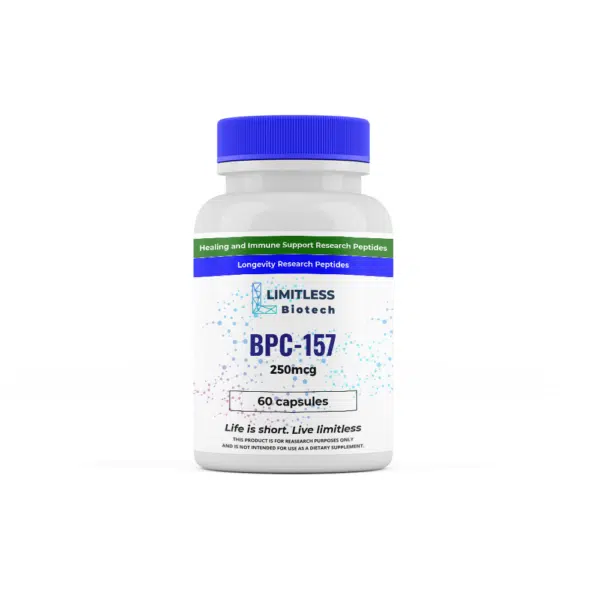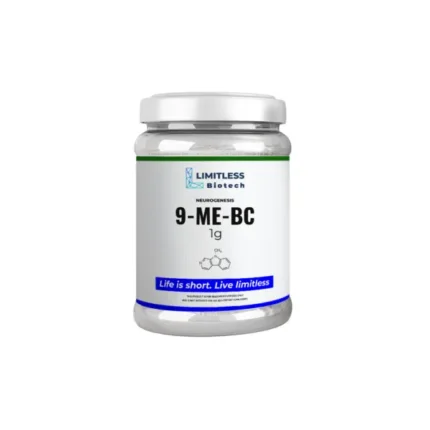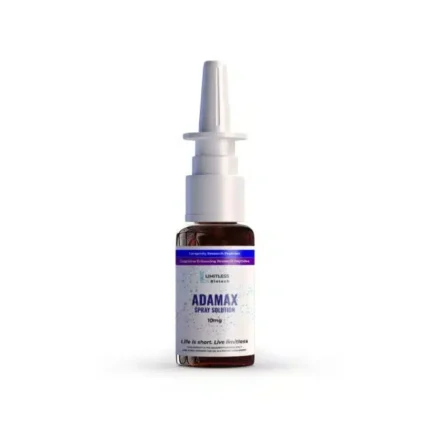BPC 157 Research
BPC-157 has demonstrated tissue-protective and regenerative properties in experimental models, particularly in gastrointestinal, musculoskeletal, and nervous tissues, potentially through the upregulation of growth factors such as VEGF, EGF, and FGF.
BPC-157 and Gastrointestinal Healing (Gut Health)
BPC-157 appears to support gastrointestinal mucosal integrity and cytoprotection, possibly by protecting stomach cells and the endothelium, and by influencing blood vessel function in response to injury or obstruction. This may help restore blood flow and reverse injury progression in animal models[1].
The peptide has shown consistent effectiveness in healing acute and chronic injuries throughout the digestive system in animal studies, outperforming some standard angiogenic growth factors in these models[2].
BPC-157 has been observed to promote healing of various types of gastrointestinal fistulas (both internal and external) and anastomoses in rats, even under challenging conditions such as NSAID-induced impairment or short bowel syndrome[3].
In animal models, BPC-157 has been reported to counteract the negative effects of stress, NSAIDs, and vascular occlusion on the gastrointestinal tract, as well as to support adaptation after major surgical interventions[4].
BPC-157 and Tissue Regenerative Properties
BPC-157 appears to accelerate healing and recovery in various soft tissues, including tendon, ligament, and muscle, in animal models. Studies consistently report faster and more complete recovery, with improved tissue structure and function, and minimal adverse effects observed[5].
In models of skin injury, such as incisional wounds and chemical burns, BPC-157 has been shown to speed up wound healing, enhance granulation tissue formation, reepithelialization, and collagen deposition. These effects are associated with increased angiogenesis and improved tissue remodeling[6].
Research suggests BPC-157 may promote the outgrowth, migration, and survival of tendon fibroblasts, possibly through activation of the FAK-paxillin pathway[7].
It also appears to upregulate growth hormone receptor expression in tendon fibroblasts, potentially enhancing the effects of growth hormone on cell proliferation[8].
BPC-157 and Anti-inflammatory Properties
BPC-157 has been observed to reduce inflammation and tissue damage in various organs and conditions, including skin wounds, gastrointestinal lesions, and periodontitis[9].
For example, BPC-157 treatment led to faster and more complete tissue healing in different wound types and was associated with reduced inflammatory markers in models of skin inflammation and psoriasis-like lesions[10].
Research suggests that BPC-157 may protect organs from inflammatory damage, particularly in the context of ischemia-reperfusion injury. In rat studies, BPC-157 reduced histological signs of inflammation and tissue injury in the liver, kidneys, and lungs following induced ischemia and reperfusion[11].
The peptide also appears to protect the endothelium (the inner lining of blood vessels), which may help maintain vascular integrity and reduce inflammatory responses in various tissues[12].
BPC-157 and Neurological Health
BPC-157 is highlighted as a potential mediator in the brain-gut axis, with peripheral administration influencing central nervous system outcomes, possibly through modulation of neurotransmitter release and gene expression in brain regions such as the hippocampus[13].
BPC-157 appears to interact with several neurotransmitter systems, including dopamine, serotonin, glutamate, GABA, and acetylcholine. It may counteract disturbances related to these systems, such as receptor blockade, over-activity, or depletion, and may also activate certain growth factor receptors and interact with the nitric oxide (NO) system[14].
The peptide is also described as a cytoprotection mediator, potentially preventing or aiding recovery from cellular damage in both the central and peripheral nervous systems[14].
References
- Sikiric, P., Ručman, R., Turković, B., Sever, M., Klicek, R., Radić, B., Drmic, D., Stupnisek, M., Mišić, M., Vuletić, L., Pavlov, K., Barišić, I., Kokot, A., Peklić, M., Štrbe, S., Blagaic, A., Tvrdeić, A., Rokotov, D., Vrčić, H., Starešinić, M., & Seiwerth, S. (2018). Novel Cytoprotective Mediator, Stable Gastric Pentadecapeptide BPC 157. Vascular Recruitment and Gastrointestinal Tract Healing.. Current pharmaceutical design, 24 18, 1990-2001 . https://doi.org/10.2174/1381612824666180608101119.
- Seiwerth, S., Ručman, R., Turković, B., Sever, M., Klicek, R., Radić, B., Drmic, D., Stupnisek, M., Mišić, M., Vuletić, L., Pavlov, K., Barišić, I., Kokot, A., Japjec, M., Blagaic, A., Tvrdeić, A., Rokotov, D., Vrčić, H., Starešinić, M., Šebečić, B., & Sikiric, P. (2018). BPC 157 and Standard Angiogenic Growth Factors. Gastrointestinal Tract Healing, Lessons from Tendon, Ligament, Muscle and Bone Healing.. Current pharmaceutical design, 24 18, 1972-1989 . https://doi.org/10.2174/1381612824666180712110447.
- Grgić, T., Grgić, D., Drmic, D., Sever, A., Petrovic, I., Sučić, M., Kokot, A., Klicek, R., Sever, M., Seiwerth, S., & Sikiric, P. (2016). Stable gastric pentadecapeptide BPC 157 heals rat colovesical fistula.. European journal of pharmacology, 780, 1-7 . https://doi.org/10.1016/j.ejphar.2016.02.038.
- Sikiric, P., Seiwerth, S., Ručman, R., Drmic, D., Stupnisek, M., Kokot, A., Sever, M., Zoričić, I., Zoričić, Z., Batelja, L., Žiger, T., Luetić, K., Vlainić, J., Rašić, Ž., & Benčić, M. (2017). Stress in Gastrointestinal Tract and Stable Gastric Pentadecapeptide BPC 157. Finally, do we have a Solution?. Current pharmaceutical design, 23 27, 4012-4028 . https://doi.org/10.2174/1381612823666170220163219.
- Gwyer, D., Wragg, N., & Wilson, S. (2019). Gastric pentadecapeptide body protection compound BPC 157 and its role in accelerating musculoskeletal soft tissue healing. Cell and Tissue Research, 377, 153 – 159. https://doi.org/10.1007/s00441-019-03016-8.
- Huang, T., Zhang, K., Sun, L., Xue, X., Zhang, C., Shu, Z., Mu, N., Gu, J., Zhang, W., Wang, Y., Zhang, Y., & Zhang, W. (2015). Body protective compound-157 enhances alkali-burn wound healing in vivo and promotes proliferation, migration, and angiogenesis in vitro. Drug Design, Development and Therapy, 9, 2485 – 2499. https://doi.org/10.2147/DDDT.S82030.
- Chang, C., Tsai, W., Lin, M., Hsu, Y., & Pang, J. (2011). The promoting effect of pentadecapeptide BPC 157 on tendon healing involves tendon outgrowth, cell survival, and cell migration.. Journal of applied physiology, 110 3, 774-80 . https://doi.org/10.1152/japplphysiol.00945.2010.
- Chang, C., Tsai, W., Hsu, Y., & Pang, J. (2014). Pentadecapeptide BPC 157 Enhances the Growth Hormone Receptor Expression in Tendon Fibroblasts. Molecules, 19, 19066 – 19077. https://doi.org/10.3390/molecules191119066.
- Kerémi, B., Lohinai, Z., Komora, P., Duhaj, S., Borsi, K., Jobbágy-Óvári, G., Kálló, K., Székely, A., Fazekas, A., Dobó-Nagy, C., Sikiric, P., & Varga, G. (2009). Antiinflammatory effect of BPC 157 on experimental periodontitis in rats.. Journal of physiology and pharmacology : an official journal of the Polish Physiological Society, 60 Suppl 7, 115-22 .
- Šola, M., Skroza, N., Mangino, G., Škrtić, A., Seiwerth, S., & Sikiric, P. (2022). Do We Have a New Psoriasis Drug?. The FASEB Journal, 36. https://doi.org/10.1096/fasebj.2022.36.s1.r5345.
- Demirtaş, H., Özer, A., Yıldırım, A., Dursun, A., Sezen, Ş., & Arslan, M. (2025). Protective Effects of BPC 157 on Liver, Kidney, and Lung Distant Organ Damage in Rats with Experimental Lower-Extremity Ischemia–Reperfusion Injury. Medicina, 61. https://doi.org/10.3390/medicina61020291.
- Sikiric, P., Seiwerth, S., Grabarević, Ž., Petek, M., Ručman, R., Turković, B., Rotkvić, I., Jagić, V., Duvnjak, M., Miše, S., Djačić, S., Šeparović, J., Veljača, M., Sallmani, A., Banic, M., & Brkić, T. (1994). The beneficial effect of BPC 157, a 15 amino acid peptide BPC fragment, on gastric and duodenal lesions induced by restraint stress, cysteamine and 96% ethanol in rats. A comparative study with H2 receptor antagonists, dopamine promotors and gut peptides.. Life sciences, 54 5, PL63-8 . https://doi.org/10.1016/0024-3205(94)00796-9.
- Sikiric, P., Seiwerth, S., Ručman, R., Kolenc, D., Vuletić, L., Drmic, D., Grgić, T., Štrbe, S., Zukanović, G., Crvenković, D., Madžarac, G., Rukavina, I., Sučić, M., Barić, M., Starčević, N., Krstonijević, Z., Benčić, M., Filipčić, I., Rokotov, D., & Vlainić, J. (2016). Brain-gut Axis and Pentadecapeptide BPC 157: Theoretical and Practical Implications. Current Neuropharmacology, 14, 857 – 865. https://doi.org/10.2174/1570159X13666160502153022.
- Sikiric, P., Blagaić, B., Štrbe, S., Orešković, B., Orešković, I., Sikirić, S., Starešinić, M., Sever, M., Kokot, A., Jurjevic, I., Matek, D., Coric, L., Krezic, I., Tvrdeić, A., Luetić, K., Vuletić, B., Pavić, P., Meštrović, T., Sjekavica, I., Škrtić, A., & Seiwerth, S. (2024). The Stable Gastric Pentadecapeptide BPC 157 Pleiotropic Beneficial Activity and Its Possible Relations with Neurotransmitter Activity. Pharmaceuticals, 17. https://doi.org/10.3390/ph17040461.














Reviews
There are no reviews yet.